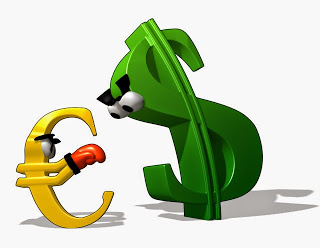The US dollar’s strength is a product of both the expected trajectory of Fed policy and the fact that ECB and BOJ are still in aggressive easing modes. Both sides of the equation of being driven home. Wall Street’s Journal’s Hilsenrath recognized to be well sourced at the Federal Reserve reaffirms that it is on track to raise rates later this year. Next week, the FOMC will likely continue to recognize that it can be “patient”. However, to sustain expectations of a mid-year hike, it seems likely to change its guidance at the March meeting, which is followed by a press conference.Â

At the same time, there are expectations for the BOJ to cut its growth and inflation forecasts at the conclusion of its two day meeting tomorrow. There is also speculation that it may cut its deposit rate, which has stood at 30 bp since late 2008. While the Japanese 2-year bond yield has been negative, today is the first day that the 5-year yield has slipped below zero. Â
The main focus this week is on the ECB and the likelihood that it announces a more aggressive asset purchase plan that will include sovereign bonds. Even though the German representatives at the ECB are still expected to balk at the decision, the German government appears to have indicated that it will not publicly oppose, despite its private misgivings. The compromises on risk-sharing (sovereign bonds to stay on national central bank balance sheets), the size of the program (seen around 500-700 bln euros), and maturities (shorter) are anticipated. Many observers share our concern that the  program has largely been discounted, and more importantly, may not fix what ails the eurozone.Â
The BOJ is expanding its balance sheet by an incredible 1.4% of GDP per month and is fighting an uphill battle to lift inflation. The ECB’s program will be considerably smaller. Six eurozone members already have negative 2-year yields, two have negative 5-year yields (Germany and Finland), and another four have 5-year yields below 10 bp. As we have seen with the ABS that the ECB is trying to buy, there are less willing sellers.

